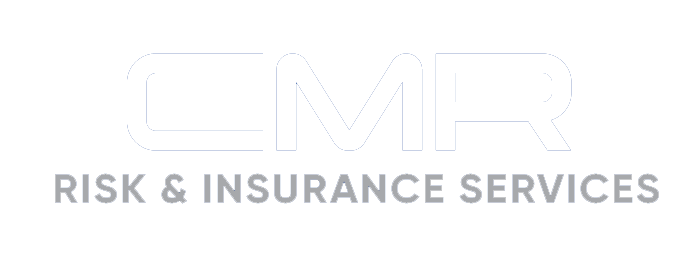Real Estate Industry Trends to Watch in 2025

The real estate sector consists of two categories: habitational and commercial. Habitational real estate pertains to residential properties, whereas commercial real estate refers to buildings utilized for business activities. This industry plays a key role in the economy, providing individuals with comfortable places to live and equipping businesses with adequate spaces to conduct their operations.
Recent years have seen considerable growth across the real estate sector, largely stemming from fluctuating consumer demand and ongoing shifts in the property landscape. According to Statista, the U.S. real estate industry is expected to grow at an annual rate of 3.3% through 2029, reaching a market volume of over $155 trillion by the end of the decade.
However, with growth comes risks, some of which could undermine the sector’s stability. Real estate businesses should remain vigilant in monitoring the industry’s emerging trends—including climate exposures, technological innovations, cybersecurity concerns and insurance market volatility—and adjust their risk management programs accordingly. This article provides more information on real estate sector trends to watch in 2025 and outlines tips to help navigate them.
Climate Exposures
Extreme weather events (e.g., hurricanes, floods, tornadoes, droughts, wildfires and winter storms) have skyrocketed in the last few decades, causing widespread destruction. The National Oceanic and Atmospheric Administration (NOAA) reported that the United States experienced 27 separate weather and climate disasters with losses exceeding $1 billion in 2024, representing the fourth worst year on record. These events have contributed to significant damage among residential and commercial structures, driving down the value of properties located in disaster-prone areas and making it increasingly difficult for real estate businesses to lease and sell them.
Coastal properties are particularly vulnerable to climate exposures. While coastal areas make up a small portion of land in the United States, they are some of the most popular spaces for residential and commercial real estate, with 40% of U.S. residents living near beaches and harbors, according to the NOAA. Due to their proximity to the ocean, coastal properties are more likely to be impacted by saltwater corrosion, which can weaken building materials and damage electrical systems, creating multiple safety hazards.
As sea levels rise, coastal properties have also become more susceptible to storm surges. Following hurricanes and floods, storm surges can leave behind standing water and excess moisture, fostering rampant mold and mildew growth and posing major health risks. Erosion may also undermine coastal properties, potentially leading to catastrophic collapse.
In response to these challenges, real estate businesses must implement effective risk management strategies. These may include conducting detailed risk assessments to determine specific disaster exposures, ensuring residential and commercial properties are equipped with weather-resilient features (e.g., reinforced building materials, elevated structures, storm shutters, floodproof landscaping techniques and fire-resistant roofing), and leveraging any available government incentives and programs related to climate adaptation. Real estate companies should also stay informed about local climate risk projections and adapt their portfolios as needed to minimize exposures in high-risk areas.
Technological Innovations
The real estate industry has experienced many technological advancements over the past few years, and there is no sign of this stopping anytime soon. In fact, a recent survey conducted by Deloitte revealed that the majority (81%) of real estate companies plan to increase their data and technology spending to further enhance their operations in 2025. The sector’s latest innovations primarily center around artificial intelligence (AI) and the Internet of Things (IoT).
Real estate businesses are leveraging AI tools to automate certain tasks and workflows, such as reviewing lease documents, screening potential tenants, and scheduling property repairs and maintenance. These tools can conduct such assignments in a matter of minutes, allowing real estate companies to maximize productivity and boost operational efficiencies.
Meanwhile, IoT technology is transforming property management processes across the real estate industry. By installing IoT sensors in their properties, real estate businesses can collect information—both remotely and in real-time—on various building components, including plumbing; heating, ventilating and air conditioning systems; electrical panels; smoke detectors; fire sprinklers; and security features (e.g., cameras and alarms). This technology enables early detection of problems, whether it’s a water leak or possible intruder, and paves the way for prompt action to prevent costly damage. With IoT sensors, real estate businesses can improve property maintenance protocols, enhance tenant satisfaction, and reduce large-scale losses and subsequent insurance claims.
Although these technological innovations offer substantial benefits, they come with their own set of challenges. Implementation requires significant capital investment, workforce training and ongoing maintenance. Further, such technology may expand potential attack surfaces and avenues for cybercriminals. Real estate companies must carefully assess these risks and ensure they have the resources to manage them effectively before adopting new technology.
Cybersecurity Concerns
As real estate businesses embrace more technology, they could face additional cybersecurity threats. IoT sensors, smart building features (e.g., smart thermostats, lighting and appliances) and cloud-based systems could be particularly prone to data breaches and other types of cyberattacks, especially without adequate safeguards in place. One of the most prevalent cybersecurity threats facing the real estate sector is ransomware, which refers to a form of malicious software that blocks access to a device or server (and any data stored on this technology) until a large sum of money is exchanged. According to a recent report from Coalition, ransomware incidents generate an average of $353,000 in total losses per attack.
To mitigate cybersecurity threats, real estate businesses should improve their digital defenses. This may include performing regular cybersecurity audits, providing staff with routine data privacy training, enabling multifactor authentication, leveraging endpoint detection and response solutions, installing advanced antivirus and malware protection software, utilizing patch management systems to ensure regular software updates, segmenting and segregating critical networks, implementing email authentication technology, conducting frequent data backups and establishing cyber incident response plans. These defenses can help real estate businesses safeguard sensitive data and avoid costly disruptions.
Insurance Market Volatility
Rising claim frequency and severity have generated hardened conditions across the general liability and commercial property insurance segments in the last few years. In the general liability space, average premium increases have hovered near 5% for multiple quarters, while commercial property rates peaked around 20% in 2023 and have mostly remained in the double digits since then, according to industry data. Surging property losses stemming from extreme weather events and increasing liability claims due to security-related incidents and property maintenance concerns are the primary drivers of these unfavorable conditions.
As insurers adjust their risk appetites, many real estate companies have become subject to stricter underwriting requirements and reduced coverage limits. In high-risk locations, insurers may exit the market altogether, posing underinsurance concerns for impacted real estate businesses.
To navigate these challenges, real estate companies will need to ensure sufficient loss control measures, such as bolstering weather resilience, installing advanced security and fire suppression systems, and maintaining routine property maintenance schedules. Furthermore, working with knowledgeable insurance brokers who understand the complexities of the real estate market is crucial for securing tailored policies. Real estate companies may also want to discuss alternative risk transfer mechanisms with their brokers, such as captives or parametric insurance, to better manage their exposures.
Conclusion
Several trends are impacting the real estate sector this year, emphasizing the importance of staying informed and adaptive. By tracking these developments and mitigating any associated exposures, real estate businesses can effectively position themselves to promote long-term growth and boost operational success.
Contact us today for additional industry-specific risk management guidance.
Article Published By: Zywave, Inc
